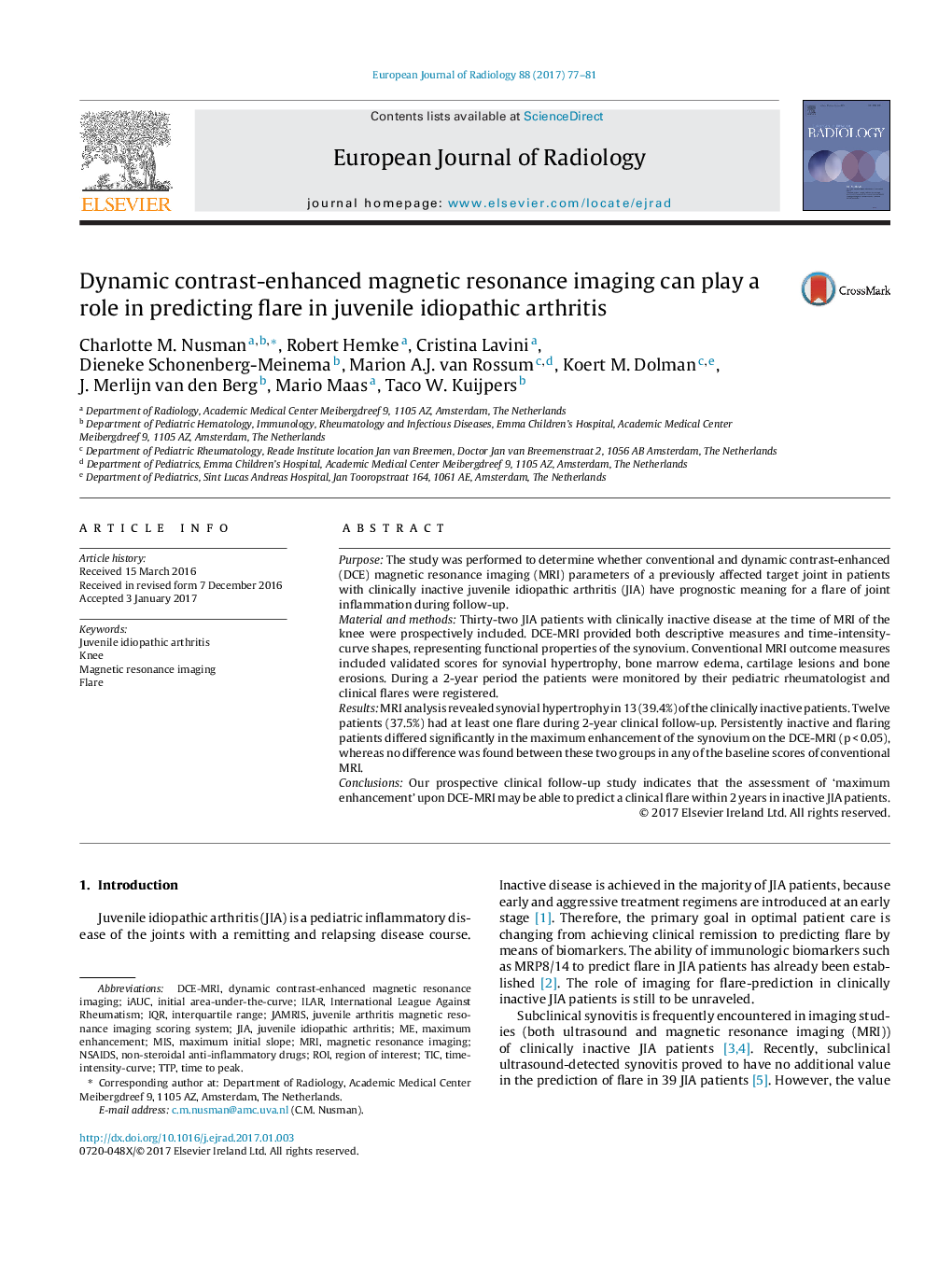| Article ID | Journal | Published Year | Pages | File Type |
|---|---|---|---|---|
| 5726229 | European Journal of Radiology | 2017 | 5 Pages |
â¢Subclinical synovitis is present in 40% of the inactive JIA patients.â¢One third of the inactive JIA patients flared during 2-year clinical follow-up.â¢DCE-MRI can play a role in predicting clinical flare in JIA patients.
PurposeThe study was performed to determine whether conventional and dynamic contrast-enhanced (DCE) magnetic resonance imaging (MRI) parameters of a previously affected target joint in patients with clinically inactive juvenile idiopathic arthritis (JIA) have prognostic meaning for a flare of joint inflammation during follow-up.Material and methodsThirty-two JIA patients with clinically inactive disease at the time of MRI of the knee were prospectively included. DCE-MRI provided both descriptive measures and time-intensity-curve shapes, representing functional properties of the synovium. Conventional MRI outcome measures included validated scores for synovial hypertrophy, bone marrow edema, cartilage lesions and bone erosions. During a 2-year period the patients were monitored by their pediatric rheumatologist and clinical flares were registered.ResultsMRI analysis revealed synovial hypertrophy in 13 (39.4%) of the clinically inactive patients. Twelve patients (37.5%) had at least one flare during 2-year clinical follow-up. Persistently inactive and flaring patients differed significantly in the maximum enhancement of the synovium on the DCE-MRI (p < 0.05), whereas no difference was found between these two groups in any of the baseline scores of conventional MRI.ConclusionsOur prospective clinical follow-up study indicates that the assessment of 'maximum er prospective clinical follow-up study indicates that the assessment of 'maximum enhancement' upon DCE-MRI may be able to predict a clinical flare within 2 years in inactive JIA patients.
